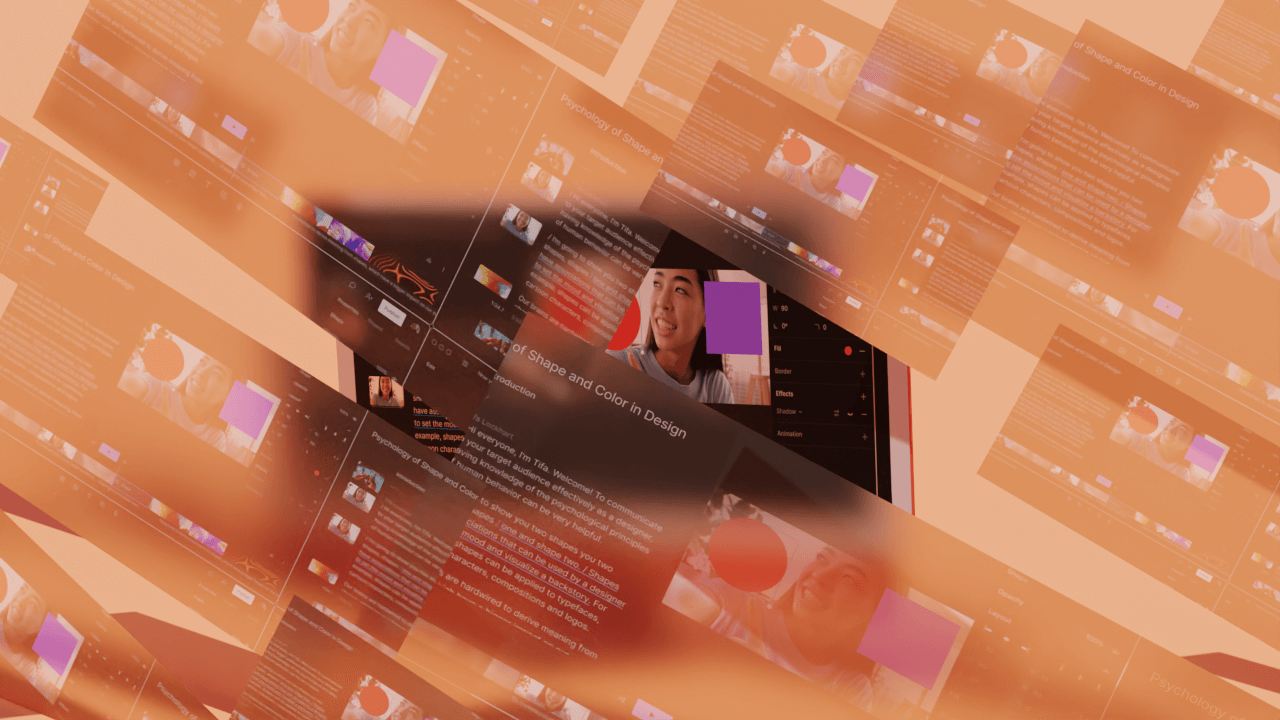Let’s face it: Content creation takes forever.
And I hear time and time again that so many podcasters are spending an incredible amount of time — or money paying for other peoples’ time — creating promotional content for each of their episodes.
Now, when you’re creating and sharing content for your own show, it’s easy to know exactly what types of media you need and how you’ll use it.
But when you add guests into the mix, things can get complicated quickly.
First, you want to make sure that you’re creating promotional content that they’ll actually share. But to do that, you need to know their current approach to content. Do they promote their guest episodes in their email newsletters, on their social platforms, or in some other way? Are they more likely to share an image, a video, or a simple text post? The answer to that question will tell you what type of content to give them the dimensions it needs to be, whether it’s standard graphics, audiograms, or videograms that could be used on LinkedIn, Instagram, or uploaded to YouTube.
And let’s not forget about branding either. Do you use your podcast’s style guide to influence your promo assets? Do you focus on the guest’s headshot or maybe their branding?
If these questions leave you feeling overwhelmed, there’s a good chance you skip all of that customization and you create a large collection of assets that can be replicated episode after episode with the hopes that your guests will share your content with their audience.
If you want to stop hoping and start approaching content creation from a strategy-first perspective, this article is for you.
Consider your branding
I get why people believe that their promotional assets need to be styled to match their podcast’s brand. Podcasts are just like businesses: It’s vital to build up brand recognition if you’re hoping to grow your audience.
But what happens when your branding doesn’t quite match your guests?
When I first started my podcast, I cycled weekly through assets in varying brand colors, which at the time were shades of blue, green, yellow, and pink. I didn’t think twice about my branding affecting my guests’ decisions on whether to share the images and audiograms I was sending them, until one day, I received assets from a show I was on — and an episode I was really proud of — that seriously clashed with my brand vibe.
Now, I’m a pretty easygoing person, so this isn’t something that would usually bother me, but because I was in the midst of a product launch, I didn’t want the guest episode images to be so jarringly different from the others on my social media feeds. So I had to choose between not sharing it at all or creating my own graphics to announce that our episode was live.
Which got me thinking about my own guests’ experiences. Were the brightly colored assets that I was sending them holding them back from sharing our episode? I was fortunate enough to have an honest guest-turned-friend I could ask, and she reported that the bright yellow graphics I sent her didn’t quite inspire her to share with her audience.
 |
In fact, I didn’t notice it at the time, but she didn’t use any of the graphics I created for her. She did, however, go out of her way to create her own graphic that better matched her branding. So the opportunity wasn’t lost, but the time I spent creating multiple social media images and an audiogram was certainly wasted. And worse, it was anything but an easy process for my guest.
If you want your guests to share podcast promotional assets that highlight your branding, create something that’s simple in design. Here’s an example of a simple graphic from my episode on the Hashtag Managed podcast and a still frame from a videogram for the Copywriter on Call podcast that were both branded to the show, but in a neutral, not overpowering way.
 |
 |
Consider your guest’s branding
If you want your guests to promote their episode on your show, you might want to consider creating graphics that match their brand colors.
I know, I know, you’re thinking that we started this conversation talking about how much time content creation takes, but imagine if you were able to create standard graphics that only required a quick picture and hex code color change. Don’t you think your guests would be more motivated to share the episode if you’ve gone out of your way to customize the look to their style?
I asked Deanna Seymour, graphic designer and host of the Big Fun Content podcast to share her thoughts on whether branding your podcast promotional assets would influence your guests to share the episode with their audience.
It turns out that this is something Deanna already does as part of her workflow to help her guests promote their episodes on her show. She says, “I started creating a graphic for [my guests] to share in their emails with their brand colors. I actually add this graphic to the body of the email I send to them about their episode so they can picture what it would look like in their own newsletter.”
Now, this doesn’t mean you have to create a significant amount of content that matches your guest’s branding. Even one piece of visual content that matches your guest’s branding could go a long way.
Deanna says, “Realistically, they're not going to share our stuff everywhere and on every platform. So I thought, “Where would I most like my guests to share their interview? The answer for me was: their email list!” So all Deanna needs to do for for each guest is to update the background color — and the episode information, obviously — and her strategic sharing goals will be as successful as she can make them.
This is exactly what Deanna did recently when she interviewed me about content ideation on her podcast. She shared a graphic in my boldest brand color, and she asked outright if I could use it in my email newsletter to help promote our episode.
 |
As a guest, I was so pleased that she took the time to research my business’s branding and present me with an option that would suit both of our needs. Now, when my email subscribers see this promo graphic, it won’t feel jarring in their inboxes, and they may be more apt to click it to listen into our conversation.
Consider no branding at all
I realized recently that a batch of videograms I created that featured the stacked videos of myself and my guest, plain captions, and a small version of my podcast logo were performing pretty well on social media.
 |
Which led me to wonder whether there was a benefit to promotional assets, like audiograms and videograms, that weren’t branded at all. Are social media users enjoying these videos because they don’t feel like they’re being sold to, and instead feel part of the conversation?
While I can’t know for sure my audience’s motivations for paying closer attention to the plain video clips that I shared, I did ask Deanna what she thought of removing the podcast-specific branding to make the visual content blend better into the doomscroll of a user’s social media content.
She says, “This is interesting to me because I do really want people to know it's a podcast — specifically mine. So if you remove all the branding, it would just look like another reel.”
But Deanna does acknowledge that branding may be one of the reasons guests don’t share the marketing assets you’ve created for them. She says, “It's a tightrope, because you want to build up brand recognition for your own show, but you'd love to have more people sharing it. So I think trying to come up with a win-win for both the host and the guest is the sweet spot.”
It’s up to you what that sweet spot looks like. Maybe it’s their colors and your logo, maybe it’s something simpler, maybe it’s no branding at all. The key is to consider what you want to get out of it and what your guest is most likely to share.
Consider the timing
Here’s the hard truth: you can’t wait until the day of your show to send your guests promotional content.
Deanna says, “I'm committed to sharing the promos with guests the month before their episode comes out. If people plan ahead or have a team that schedules it for them, their content is probably already planned for at least a few weeks in advance.”
Now, if you’re not working as far ahead in your podcast, the idea of sending promotional assets an entire month before an episode launches might make you feel a bit weak in the knees. The good news is that you can set your own schedule for sharing promo material. It can be a couple weeks in advance or even the very same week.
But, just remember, when you share the episode assets with your guests right around when the conversation goes live, there’s less chance they’ll share the episode with their audience when it’s still fresh.
Deanna explains, “When you send the graphics at the last minute or the day the podcast comes out, your guests have to work harder and spend time trying to figure out how to squeeze your assets into their marketing plans — and the chances of it just falling to the wayside are high. But if you send it early enough, it SAVES them time and energy because that's a free post they don't need to come up with on their own.”
It’s also fine to send a reminder about the marketing assets you share.
People forget. I know I certainly rejoice when reminders show up in my inbox because my own to-do list is a mile long and often things that feel tiny to me, like scheduling social media content, could be very important to other people. I’ve never felt annoyed by a kind nudge, and assuming you had a good conversation with your guest, chances are they’ll be grateful for the reminder, too.
🤝 Read more: 7 strategies for getting your podcast guests to share the episode (and does it matter?)
Make it easy for them
Regardless of the type of visual assets you give your guests, the best way to get them to share is to make it as easy as possible for them.
Do like Deanna does and ask your guests to share in the exact way you’re hoping for, whether that be in their email newsletter or on a specific social media network. If possible, go the extra step and share some pre-written copy that your guests can use to make the effort so much easier for them.
Not sure what to write? Supply them with quotes from the episode or simple bullet points about what the episode was about that they can develop into social posts that match their own voice and tone. The more prepared you make your guests feel, the more likely they are to promote.
Also know that once you put the request in, the outcome is out of your control. You can’t force anyone to share. But by letting your guests know what you’d like in advance of the episode going live, you’re making it more likely they’ll take the time to promote your show.


































.jpg)






